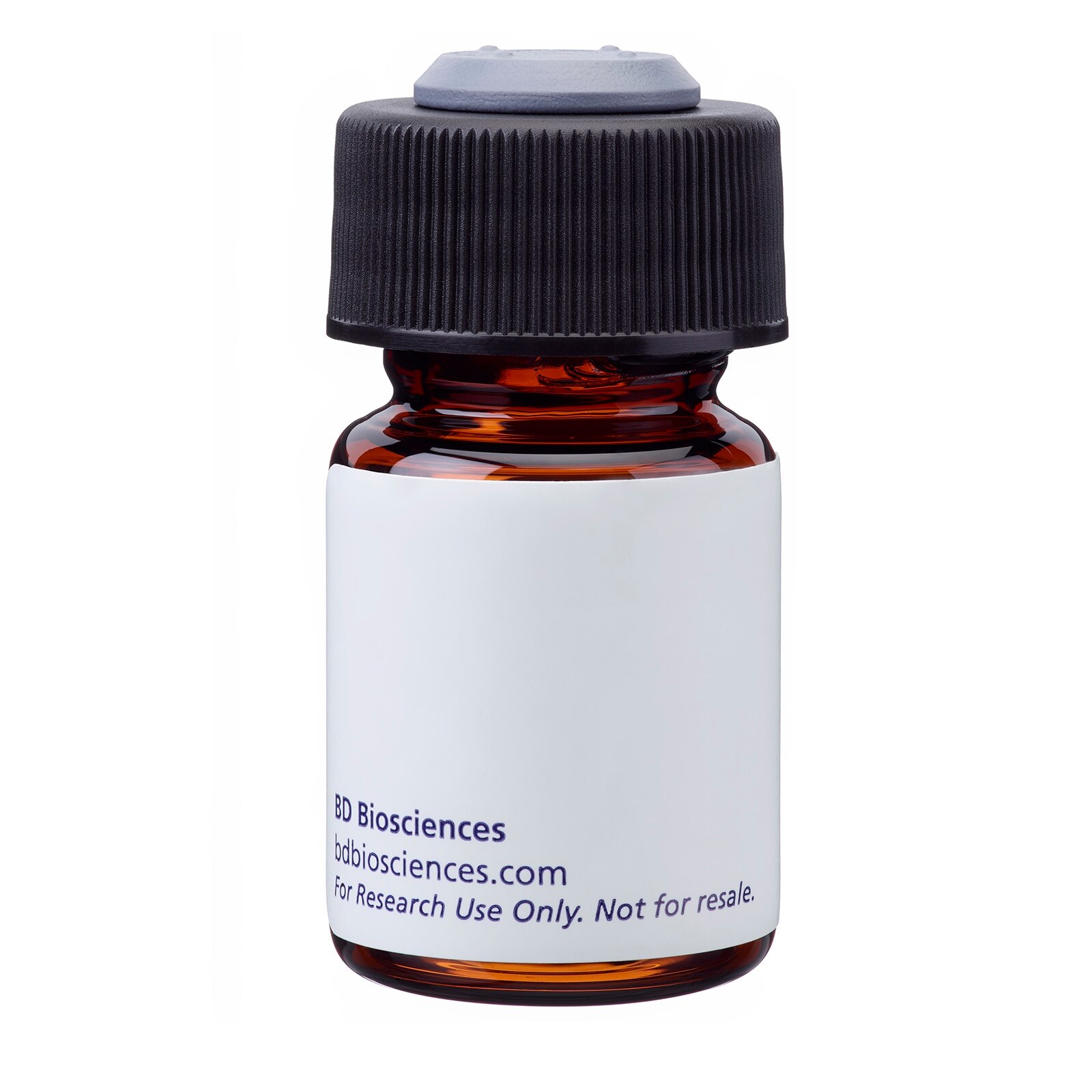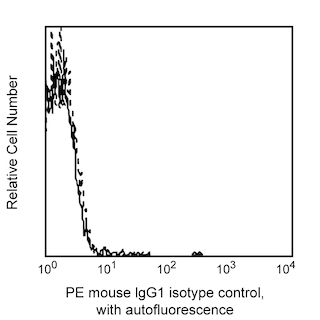Old Browser
This page has been recently translated and is available in French now.
Looks like you're visiting us from {countryName}.
Would you like to stay on the current country site or be switched to your country?



Profile of peripheral granulocytes analyzed on a FACScan (BDIS, San Jose, CA)


BD Pharmingen™ PE Mouse Anti-Human fMLP receptor

Regulatory Status Legend
Any use of products other than the permitted use without the express written authorization of Becton, Dickinson and Company is strictly prohibited.
Preparation And Storage
Product Notices
- This reagent has been pre-diluted for use at the recommended Volume per Test. We typically use 1 × 10^6 cells in a 100-µl experimental sample (a test).
- Since applications vary, each investigator should titrate the reagent to obtain optimal results.
- Please refer to www.bdbiosciences.com/us/s/resources for technical protocols.
- For fluorochrome spectra and suitable instrument settings, please refer to our Multicolor Flow Cytometry web page at www.bdbiosciences.com/colors.
- Caution: Sodium azide yields highly toxic hydrazoic acid under acidic conditions. Dilute azide compounds in running water before discarding to avoid accumulation of potentially explosive deposits in plumbing.
- Source of all serum proteins is from USDA inspected abattoirs located in the United States.
The 5F1 monoclonal antibody specifically binds to the N-formyl-leucyl-phenylalanine receptor (fMLP receptor), which is also known as, Formyl peptide receptor 1 (FPR1). This 55-70 kDa receptor is expressed on neutrophils, monocytes, macrophages, and liver parenchymal cells. It is composed of seven hydrophobic membrane spanning regions and is a member of the rhodopsin superfamily of G protein-coupled receptors. N-formyl peptides interact with fMLP receptors and induce neutrophil chemotaxis, phagocytosis, production of superoxide radicals and release of proteolytic enzymes. The binding of the 5F1 antibody to the fMLP receptor can be blocked by fMLP peptide.

Development References (3)
-
Barclay NA, Brown MH, Birkeland ML, et al, ed. The Leukocyte Antigen FactsBook. San Diego, CA: Academic Press; 1997.
-
Lala A, Sojar HT, De Nardin E. Expression and purification of recombinant human N-formyl-L-leucyl-L-phenylalanine (FMLP) receptor: generation of polyclonal antibody against FMLP receptor. Biochem Pharmacol. 1997; 54(3):381-390. (Biology). View Reference
-
Sengeløv H, Boulay F, Kjeldsen L, Borregaard N. Subcellular localization and translocation of the receptor for N-formylmethionyl-leucyl-phenylalanine in human neutrophils. Biochem J. 1994; 299(2):473-479. (Biology). View Reference
Please refer to Support Documents for Quality Certificates
Global - Refer to manufacturer's instructions for use and related User Manuals and Technical data sheets before using this products as described
Comparisons, where applicable, are made against older BD Technology, manual methods or are general performance claims. Comparisons are not made against non-BD technologies, unless otherwise noted.
For Research Use Only. Not for use in diagnostic or therapeutic procedures.
Report a Site Issue
This form is intended to help us improve our website experience. For other support, please visit our Contact Us page.
